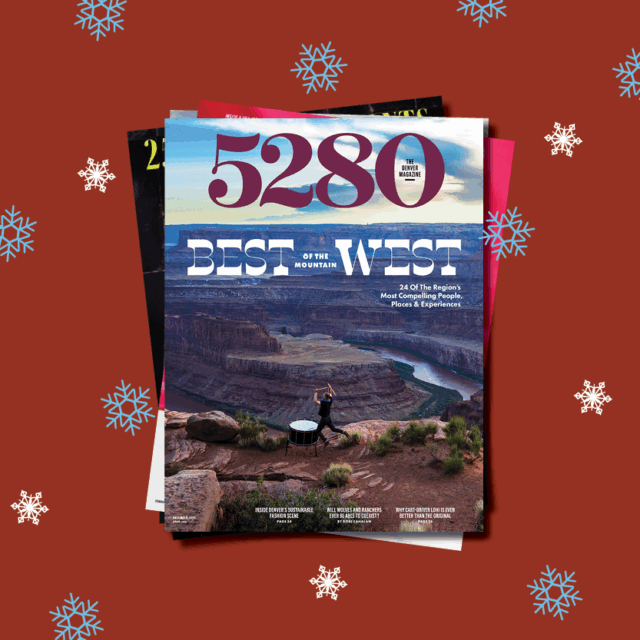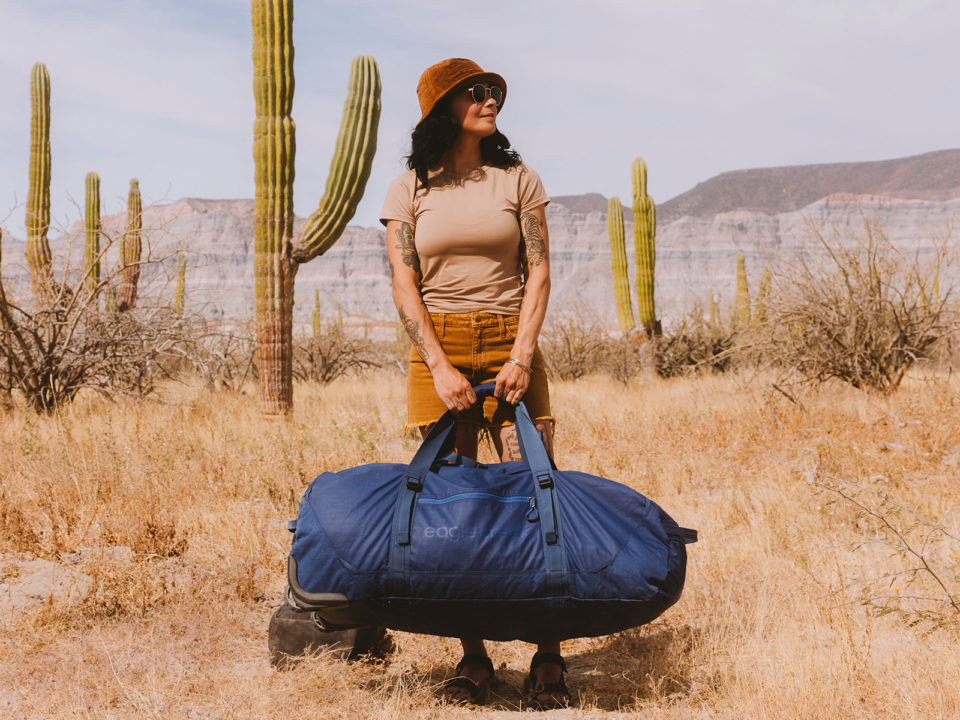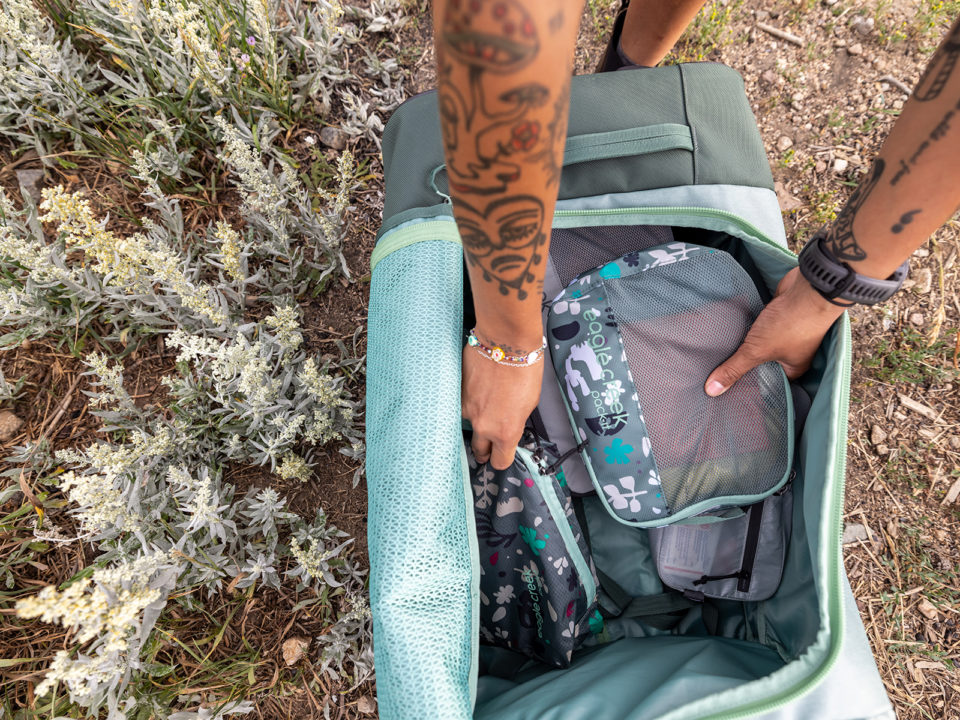The Local newsletter is your free, daily guide to life in Colorado. For locals, by locals.
For Colorado’s famously active, outdoors-loving population, the perfect vacation is probably an adventure. Whether you’re bike touring through the Loire Valley, bird-watching in New Zealand, trekking to Everest Base Camp, or highpointing a fourteener, your idea of getting out there is diverse and, well, big. In the mid-1970s, however, adventure travel was a new, if growing, idea. “Back in the day it would have been just explorers and backpackers and expeditioners on the ragged fringe of travel,” says Russell Walters, destination development and regional director for the Adventure Travel Trade Association (ATTA). “What we have seen over the years is this become a little more mainstream.”
As adventure travel has evolved, so too has the gear to support it. Today we have durable duffels that withstand hurried transitions from plane to train to rickshaw. There are packing cubes to separate active apparel from our night-out duds and special compartments for dirty undies. And we all appreciate our versatile packs with waterproof exteriors to protect souvenirs in unexpected (or perhaps just unavoidable) downpours. Eagle Creek is arguably the brand to thank for all of that. “With Eagle Creek, it felt like we had something built for us,” Walters says, “rather than using other luggage brands that weren’t really rugged enough or weren’t really built for the adventurer.”

This April, that Steamboat Springs–based, adventure-travel-focused brand celebrates 50 years. And it’s been a heckuva ride. Over the past half century, Eagle Creek has witnessed (and weathered) many fluctuations in the adventure travel industry. “Seeing those changes up close,” says current owner and CEO Travis Campbell, “has allowed us to adapt our products to best serve modern travelers as they continue to push forward in whatever adventures they pursue.”
On its golden anniversary, we sat down with Campbell to hash out the 50-year timeline of the beloved Eagle Creek brand—a company some say invented adventure travel gear.
1975 to Late 1970s: A Fledgling Brand

Steve and Nona Barker had spent years exploring, guiding, and working in outdoor retail in Southern California’s San Jacinto Mountains. Around 1975, they moved to San Diego, where Nona refined her sewing skills and began sourcing leather scraps, durable cloth from old sails, and accessory parts from upholstery shops to use in her from-scratch backpack patterns. The packs were promising, and Nona started selling them to outdoor stores, initially under the “Mountain People” moniker. She named different pack styles after specific birds of prey.
The Barkers’ decision to open a gear shop of their own is what Campbell describes today as the “big unlock.” Through close interaction with their customers, Steve and Nona learned that their technical backpacking packs had been taken around the globe. Repeat customers provided invaluable feedback—suggestions for adding hidden passport pockets, requests for more comfortable straps—that Nona incorporated into her next prototypes. When the couple focused in on travel-specific packs in the late 1970s, they did so under the now familiar “Eagle Creek” name.
Early 1980s to Late 1990s: Taking Flight
The Barkers realized they were onto something. By incorporating technologies like suspension systems and backpack configurations pulled from traditional outdoor pursuits like trekking and adapting them for typical travel endeavors—say, by making the shoulder and waist straps removable or stowable to prevent them from getting tangled in airline baggage systems—they carved a niche for themselves in the travel category.
Demand for Eagle Creek’s gear increased. Nona focused on product design, and as their business grew with the addition of new items (passport wallets, packing cubes, and luggage among them) and more employees (often friends), so did their family. Nona continued sewing at home—with little ones playing underfoot.
Steve handled Eagle Creek’s business affairs and worked on product development. With the help of their sales and marketing manager, the brand leaned further into the then-burgeoning adventure travel landscape, what the ATTA’s Walters defines as travel at the intersection of active endeavors, time in nature, and the exploration of another culture.
Just as the brand had cross-pollinated outdoor adventure with travel in the product realm, Steve and Nona saw an opportunity to do so in the retail space. They pitched the concept to the likes of outdoor industry behemoths like REI, as well as smaller, local gear shops. “Eagle Creek took this idea of adventure travel—and the sale of gear to support it—to the outdoor industry,” Campbell says. “It pioneered the idea that this was an economic opportunity for outdoor retailers.”
Early 2000s: Turbulent Skies
Interest in travel waned as the world dealt with back-to-back crises, starting with September 11 and followed by the SARS epidemic and Iraq War. Things got so dire for Eagle Creek that, according to Outside Business Journal, the bank made a move to liquidate the brand and foreclose on the Barkers’ home. The couple worked their way back to profitability, largely by reorganizing their operations to be more efficient rather than expanding product lines or distribution channels. Change, however, was brewing.
2007 to 2021: Leaving the Nest
After more than 30 years at the helm, the Barkers accepted an offer from Denver-based, globally operating apparel and footwear holding company VF Corporation (VFC) to buy Eagle Creek. Campbell, who worked at VFC from 2017 to 2021, guesses the parent company had plans to expand the Eagle Creek product line beyond core adventure travel gear and into the general travel category, likely by adding more four-wheeled pieces of luggage building out the lineup of carry-ons.
It just never happened. “Eagle Creek was always a beloved brand within the portfolio,” Campbell says, “but it never got the care and feeding required to aggressively nurture and grow it.”
Thus, Eagle Creek “bumped along,” Campbell says, “right up until COVID-19 came and shut down adventure travel. That was the last straw for VFC’s patience.”
Mid-2021: Landing Gear
In the spring, Campbell let VFC know he was interviewing for CEO roles with different outdoor companies. By then he was working remotely for VFC from his home in Steamboat Springs rather than commuting into Denver, but he was eager to return to the day-to-day process of running a brand. Unfortunately, the positions available required that Campbell either uproot his family from their beloved mountain town or spend significant time on the road away from them. “I wasn’t thrilled with the choices and trade-offs we were going to have to make as a family to continue to pursue my career goals,” Campbell says.
In early June, VFC announced publicly its intentions to “wind down” the Eagle Creek brand. Campbell, then VFC’s president of emerging brands, was tasked with leading the charge. During the process, he fielded call after call from long-time Eagle Creek users who made clear their thoughts on the matter. “A lot of people were just mad that a brand like Eagle Creek could go away, that a big public company would make that decision,” Campbell says. “People thought of Eagle Creek as one of the good guys and felt that it deserved a place to thrive.”
Late 2021: A Phoenix Rises

Campbell described to his wife the tragedy of shuttering Eagle Creek and, separately, lamented the lack of opportunities to run an outdoor brand in Steamboat Springs. She suggested they make a play for Eagle Creek. “My immediate reaction was, ‘That’s a terrible idea!’ ” Campbell recalls. “Then I slept on it and woke up the next morning, and, as usual, realized she was right.”
On September 3, Campbell celebrated his 49th birthday by closing his deal with VFC to buy Eagle Creek.
2022 to Early 2025: Soaring Once More
“Like trying to catch a moving train”—that’s how Campbell describes his first six months as Eagle Creek owner and president. “The brand kept chugging at some level,” he adds, noting when he took over, he was the sole U.S.-based employee. “We had to catch up to it with a new operating model and new employees.”
Many things evolved under Campbell’s leadership, from establishing a remote work environment (with headquarters moved from Denver to Steamboat Springs) to finding new warehouse space. Many other things stayed the same, among them the brand’s No Matter What Warranty, which covers all functional aspects of every Eagle Creek product for the duration of its life. It’s a win-win-win approach, Campbell explains of the guarantee that’s been in place since nearly the beginning. Products stay out of landfills (the company estimates around 40,000 pounds’ worth annually); product designers get their hands on old gear, which allows them to learn from past mistakes; and customers, who can continue to use a pack that contains so many memories, develop deeper brand loyalty.
Under Campbell’s leadership—not to mention a resurgence in the travel industry more broadly—Eagle Creek flourished. “A lot of our initial assumptions around consumers prioritizing travel post-pandemic and our ability to reestablish Eagle Creek as an important player in the adventure travel space came true,” he says.
The brand also continued to innovate—and people noticed. Many upgrades, like reworking the No Matter What Duffel pattern to minimize trim waste in manufacturing and using fully recycled fabrics in its packing cubes, were focused on sustainability. By July 2024, every product in the line included at least one recycled material, and intentionally added PFAS had been eliminated entirely from production. In the fall, Condé Nast Traveler readers ranked Eagle Creek among the top 15 luggage brands in the world, while in February 2025, the Yampa Valley Sustainability Council bestowed it with a Sustainable Business award. “We focused hard on the sustainability elements of the business because our customers valued it,” Campbell says. Plus, “it’s the right thing to do, and it remains an important pillar for us in helping explain what we’re trying to do with the business over the long term.”
Today: Hope Flies
Things are once again uncertain. Campbell is bracing for fallout from the on-again, off-again tariffs, which will certainly disrupt production and manufacturing on a global scale. “If this happens, the magnitude of the economic shock will be so significant that nearly everything about our business is going to have to change,” he says, pointing to the need to reduce supply-chain costs and cut discretionary spending, among many other disruptions. On top of tariffs, Americans are wondering if their jobs are safe, if their retirement savings will be there, and if a recession is imminent, Campbell points out. “Unfortunately, the consumer is increasingly anxious and that decreases demand for travel.”
Despite these challenges, he remains hopeful that the 50-year-old brand will ride this (turbulent) jet stream just like all the others. “As a species, we want to get out there and see the world, interact, and understand that we’re far more similar than we are different,” he says. “We’ll return to that. It’s just a question of when.”
3 Eagle Creek Travel Pieces to Try
Tour Travel Pack 40L

Carry-on-size and ready for adventure (thank you, recycled 420-denier ripstop nylon), the new-this-spring Tour Travel Pack ($249) features a dual opening system, hidden laptop sleeve, and padded, adjustable harness system with a waistbelt.
Pack-It Reveal Carry-On Set

Did Eagle Creek invent the packing cube? It’s hard to say (though many have). Organize your suitcase, duffle, or travel pack more efficiently with this quartet of structured mesh cubes ($104) in two different sizes (small and medium).
Explore Backpack 26L

Whether you’re commuting to work or need the perfect personal item to accompany your carry-on, this 26-liter, ripstop polyester pack ($169) is just the thing. Plus, its exterior PU wax coating will patina with age, which means it will tell tales of your exploits as well as you do.
















